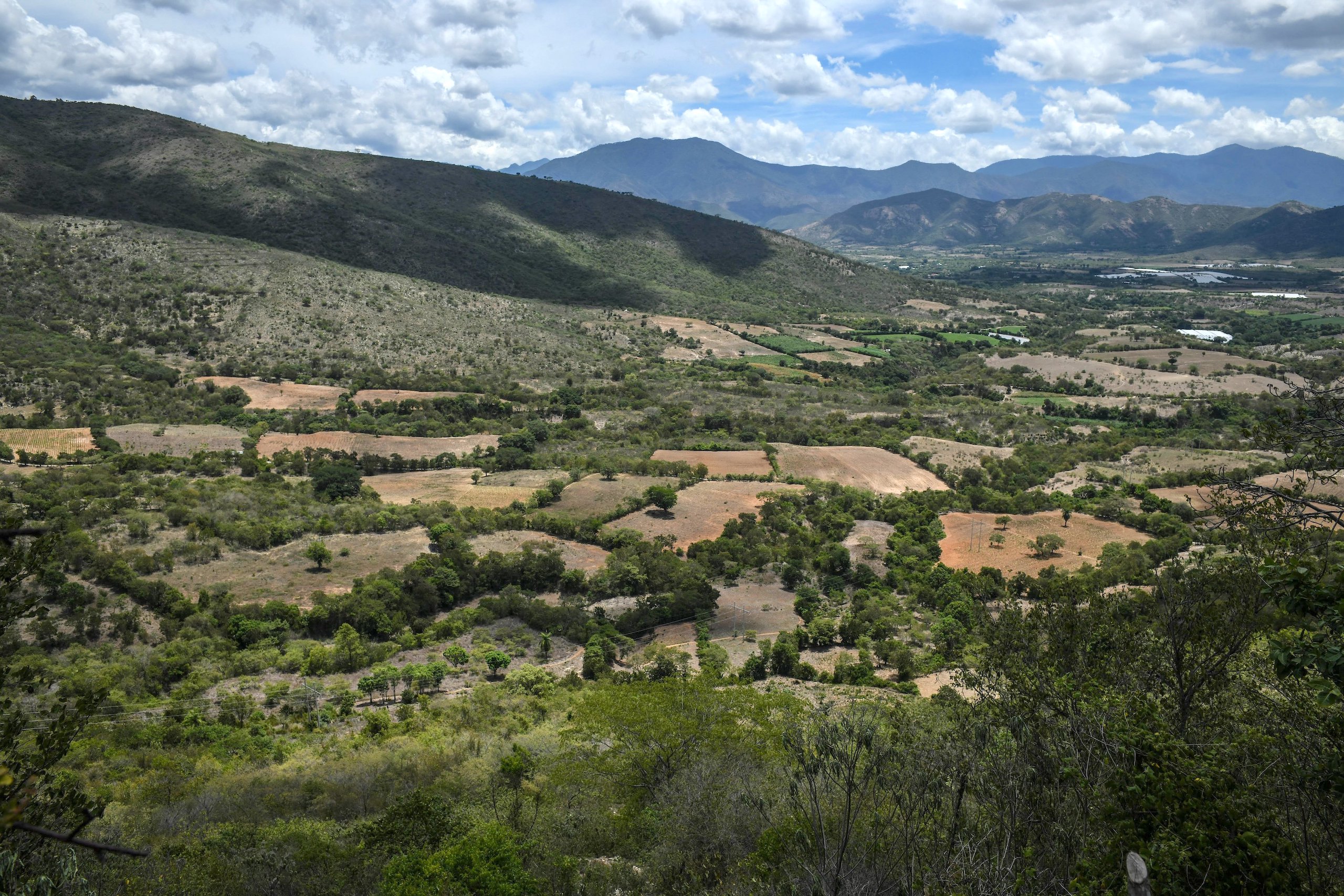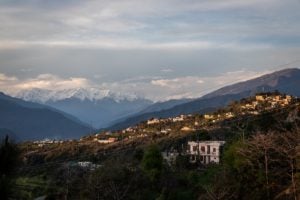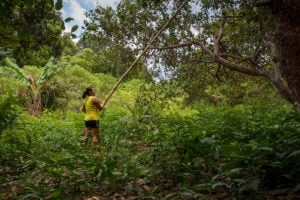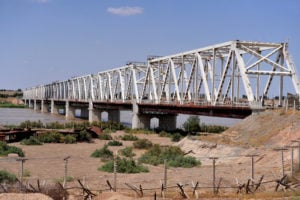Extreme weather events led to 31.8 million people around the world being internally displaced in 2022, including 2.1 million in the Americas, a new report has revealed.
The latest release from the Internal Displacement Monitoring Centre (IDMC) reports a significant increase in the forced movement of people within their country’s borders due to disasters such as floods, storms, wildfire and droughts.
By the end of 2022, the total number of people left internally displaced by disasters globally almost doubled on 2021, largely driven by the devastating floods in Pakistan. Disaster-related displacements during the year were also 41% higher than the average of the last decade. Floods were responsible for the majority – six out of ten – of these forced movements, followed by storms, droughts, landslides and extreme temperatures.
The Americas was the region that saw the fourth most displacements by climate events in the last decade, according to the IDMC. Last year, Brazil was the country in the region with the most disaster-related displacements, followed by the United States, Colombia, Haiti and Cuba.
Assessing displacement is a complex undertaking, given the differing triggers and time scales of disasters that drive forced movement. These are usually divided into two classifications: sudden onset, and slow or gradual onset.
“The former are much easier to identify because of their sudden onset: they can be hurricanes, floods, earthquakes or fires,” explains Pablo Escribano, a migration and climate change specialist at the International Organization for Migration. “But when we talk about gradual onsets such as drought, melting glaciers or rising sea levels, they tend to be more diffuse. People in these situations frequently move because their land is no longer productive or there are no longer opportunities.”
The IDMC’s findings provide a stark warning over the growing risks of displacement amid a climate crisis that is likely to bring more intense, frequent and unpredictable extreme weather events. Experts told Diálogo Chino of the urgent need for responses to pre-empt and prevent displacement in Latin America, and to increase support for those forced to relocate.
Disasters and responses in Latin America
Last year, both Brazil and Colombia experienced flooding due to episodes of heavy rain between May and November. Populations in many areas were faced with weeks of chest-deep water. Added to this devastation in both countries were landslides, caused by the saturated ground. Further north, storms such as Hurricane Ian hit Central America and forced hundreds of thousands of people to move.
In total, storms accounted for 1.2 million internal displacements across the Americas, IDMC reports, just over 50% of the total number of forced movements in the region.
708,000
The number of disaster displacements recorded in Brazil in 2022, the country’s highest figure in over a decade, driven by severe storms and floods
According to the Intergovernmental Panel on Climate Change (IPCC), the United Nations’ top climate science body, such phenomena may become even more extreme in the future, due to the effects of global warming. “The increase in water temperature makes this more likely, as does the increase in air temperature,” explains Matilde Rusticucci, an Argentine meteorologist and IPCC contributor. “These are the ideal conditions for terrible storms.”
Escribano tells Diálogo Chino that many responses have already been taken to confront extreme weather in Latin America, as well as efforts to raise greater awareness of the risks: “Several countries have designed early warning systems, and disaster risk management and evacuation protocols. In the case of Cuba, for example, when a hurricane hits, they know how to move the affected people.”
In addition to these systems, planned relocations present another alternative, with governments, NGOs and international organisations increasingly promoting the relocation of people living in flood-prone or otherwise at-risk areas to safer places – but this can be a contentious issue. “A lot of progress is being made in this regard,” Escribano says. “But it is a complex process, we have had many bad experiences.”
One example is that of Goldney and Olivera, two neighbouring villages separated by the Luján River, some 100 kilometres outside the city of Buenos Aires.
Pablo Lugones has lived in Goldney for half his life and works in Olivera. For a long time, he sold milk, but in 2000 he and his partner set up the Remo Foundation. “At first it was just a kindergarten,” he recalls, “but with the floods that came between 2000 and 2016 we also became a shelter. We housed 30 people at a time.”
During those 16 years, the river’s water level rose by more than eight times, fluctuating between two and five metres deep. Parts of the village were completely flooded, and with each new flood, the river carried away houses, furniture, clothes and mementos.
At the time, the government of the province of Buenos Aires and a group of NGOs built 40 houses in a safe area and managed to relocate the people most affected by the floods. But after a while, people began to move into the at-risk area that had previously been vacated, Lugones explains: “Today, the place that was flooded is full of people again.”
Escribano describes how this type of situation has occurred in several places in the region. He says that more comprehensive solutions are needed to address a pressing question: “How do you rebuild the livelihoods of the population that you are moving elsewhere?”
Slow-onset and cross-border displacement
While some areas Latin America suffered during storms and floods in 2022, others felt the effects of historic droughts. “This was one of the most widespread [weather] events,” says Rusticucci. “In Argentina and Uruguay there have been almost three years of prolonged drought. If we don’t do something to mitigate and adapt, where it is raining now, it’s going to rain a lot more, and where there are already droughts, they’re going to get longer and longer.”
Worldwide, in the last year alone, drought was the third leading driver of weather-related internal displacement.
One of the regions hardest hit by drought in Latin America is known as the “dry corridor”, which crosses parts of Guatemala, Honduras, El Salvador, Nicaragua and Costa Rica. For years, the corridor has seen prolonged droughts and decreasing rainfall. Although storms hit the area during hurricane season, barely a drop of water falls over the rest of the year. In 2014, 70% of the crops in the corridor failed due to drought.
Unlike storms and floods, drought does not tend to lead to sudden-onset displacement; unless a wildfire breaks out, they are more likely to drive gradual displacement, notably from rural areas as crops fail.
In Central America’s dry corridor, droughts have given rise to a progressive abandonment of land. Many people move to the cities – and other countries – where they frequently encounter new risks related to precarity and informality.
There is no legal provision that recognises climate displacementAdrián Martínez Blanco, director and founder of the NGO La Ruta del Clima
“People who migrate [from the dry corridor] due to climate displacement travel north without any kind of protection, as there is no legal provision that recognises climate displacement,” says Adrián Martínez Blanco, director and founder of the NGO La Ruta del Clima.
Although there are international frameworks that aim to integrate climate-displaced people in a similar fashion to other populations forced into migration, such as the Global Compact for Migration, these are not binding and depend on the will of individual countries.
To confront this, Martínez calls for a “complete rethink of human mobility” and the international architecture for migration. “It is necessary to adapt to the current context, with an emphasis on climate change, human rights and the rights of the most vulnerable communities.”
Legislation and monitoring in the region
While there is much room for improvement, Ivana Hajzmanova, global monitoring manager at the IDMC and an author of the report, says there has been progress in addressing climate displacement in Latin America.
“Many governments are focusing on developing instruments such as humanitarian visas, climate change adaptation plans and monitoring systems. Colombia is working on a specific law for climate displacement, and Mexico is on the same path,” Hajzmanova explains.
Hajzmanova also points to countries in Latin America with advanced monitoring systems that help to preempt displacement, including Brazil, Uruguay and Chile. However, such systems are not widespread: “We face a lack of data in several Latin American countries, so it is very difficult to really assess the magnitude of the phenomenon.”
She hopes that policy-makers will read the IDMC report and, based on the findings, make informed decisions on where more funding is needed, and which are the most acute crises that need to be addressed. “It is really the prerogative of nation states, and each of them needs to implement their own policies and legal instruments, which will help them deal with internal displacement crises,” Hajzmanova says.
For Escribano, it is also essential to work on a joint approach to internal displacement among Latin American countries. The International Organization for Migration, he explains, is looking to bring more attention to the problem in front of the international community. “COP28 is the space where we intend to raise this issue,” he says, looking ahead to the United Nations climate change conference, set to be held in December in the United Arab Emirates.









